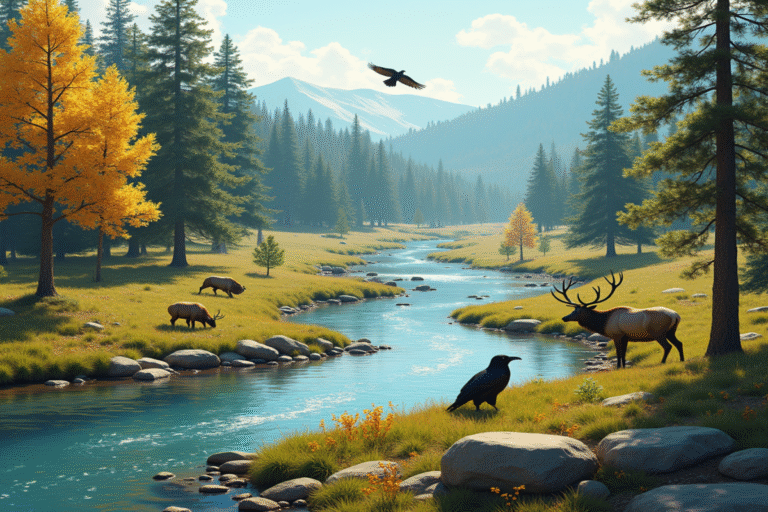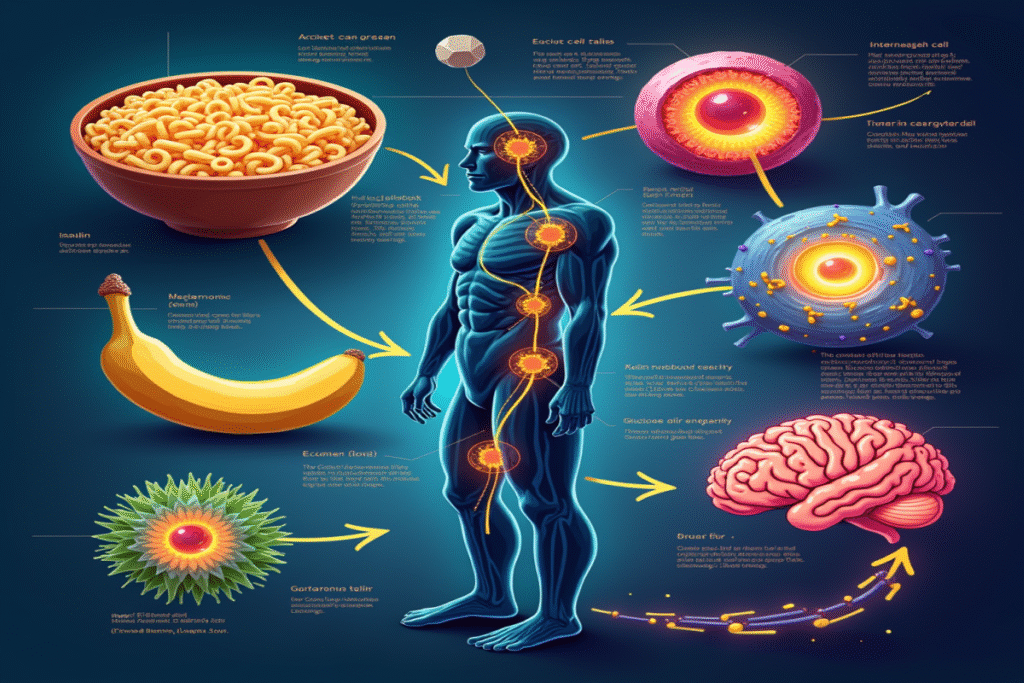Have you ever considered how the return of a single predator species can transform an entire landscape? It may sound like ecological magic, but it’s actually grounded in hard science. When wolves hunt elk, they set off a remarkable chain reaction that ripples through ecosystems in ways scientists are still discovering—and the results are astonishing.
The Ripple Effect: Understanding Trophic Cascades
A trophic cascade occurs when predators at the top of the food web influence the abundance and behavior of species at lower levels—not just their direct prey, but plants and other organisms throughout the ecosystem. It’s like dropping a stone in a pond and watching the ripples expand outward, touching everything in their path.
When wolves were reintroduced to Yellowstone National Park in 1995 after a 70-year absence, scientists witnessed ecological changes that revolutionized our understanding of how ecosystems function.
The Yellowstone Transformation
Before wolves returned, Yellowstone’s elk population had grown to unsustainable levels. These herbivores grazed heavily along rivers and streams, preventing young trees like aspen, willow, and cottonwood from growing beyond seedlings. Riverbanks eroded, beaver populations declined due to a lack of materials for dams, and many species lost essential habitat.
When wolves arrived, everything changed—not just because wolves killed some elk. The more profound impact came from what ecologists call “the ecology of fear.” Elk started avoiding areas where they were most vulnerable to predation, especially river valleys with limited escape routes. These safer zones for plants allowed vegetation to recover.
The Cascade Unfolds
As young trees flourished in these newly protected spaces, a sequence of ecological transformations followed:
- Beaver comeback: With access to more trees, beaver populations rebounded. Their dams created wetlands that attracted fish, amphibians, reptiles, and birds.
- Improved water quality: Stabilized banks reduced erosion, and beaver ponds acted as natural filters.
- Habitat explosion: New plant growth provided homes for songbirds, insects, and small mammals.
- Scavenger support: Wolf kills provided food for ravens, eagles, bears, and other scavengers.
- Physical geography changes: Reduced erosion and beaver activity altered the course and behavior of some rivers.
Beyond Yellowstone: A Global Phenomenon
This effect is not unique to Yellowstone. Similar patterns are found wherever large predators interact with herbivores and plants. In the eastern United States, areas with healthy coyote populations often show greater biodiversity, partly because coyotes control deer numbers that could otherwise overgraze native vegetation.
In marine environments, sea otters protect kelp forests by eating sea urchins that would otherwise destroy kelp. When otters decline, entire underwater forests can vanish, along with the many species that rely on them.
The Science Gets Complex
While the basic principle is clear, ecologists continue to study how strong and widespread trophic cascades really are. Some ecosystems respond more dramatically than others. Factors such as landscape, climate, human activity, and the presence of multiple predator or prey species influence how these cascades develop.
Recent research uses advanced methods like GPS tracking, remote cameras, and isotope analysis to map these interactions with outstanding detail. Scientists can now track how predators affect prey behavior down to specific locations and times of day.
Why This Matters
Understanding trophic cascades has changed how we approach conservation. Instead of focusing on individual species, more conservationists aim to restore natural processes—especially predator-prey relationships that are key to ecosystem health.
This perspective challenges the notion of removing predators. When we eliminate wolves, lions, sharks, or other top predators, we don’t just affect those animals—we alter entire landscapes and the critical services they provide, from clean water to carbon storage.
Most remarkably, the science of trophic cascades shows nature’s resilience. Ecosystems that lost their top predators can often recover when those animals return, though it may take years or even decades.
The Bigger Picture
The next time you look at a forest, try to see beyond the individual trees. Imagine the invisible connections linking predators, prey, plants, and even rivers in a complex web of life. That wolf hunting an elk isn’t just securing a meal—it’s helping to shape the landscape through ripples of influence that reach far beyond the hunt itself.
At a time when environmental news can seem discouraging, trophic cascades offer a hopeful message: restoring a single missing link can help heal entire ecosystems. Nature, when given the opportunity, remembers how to regain its balance.





